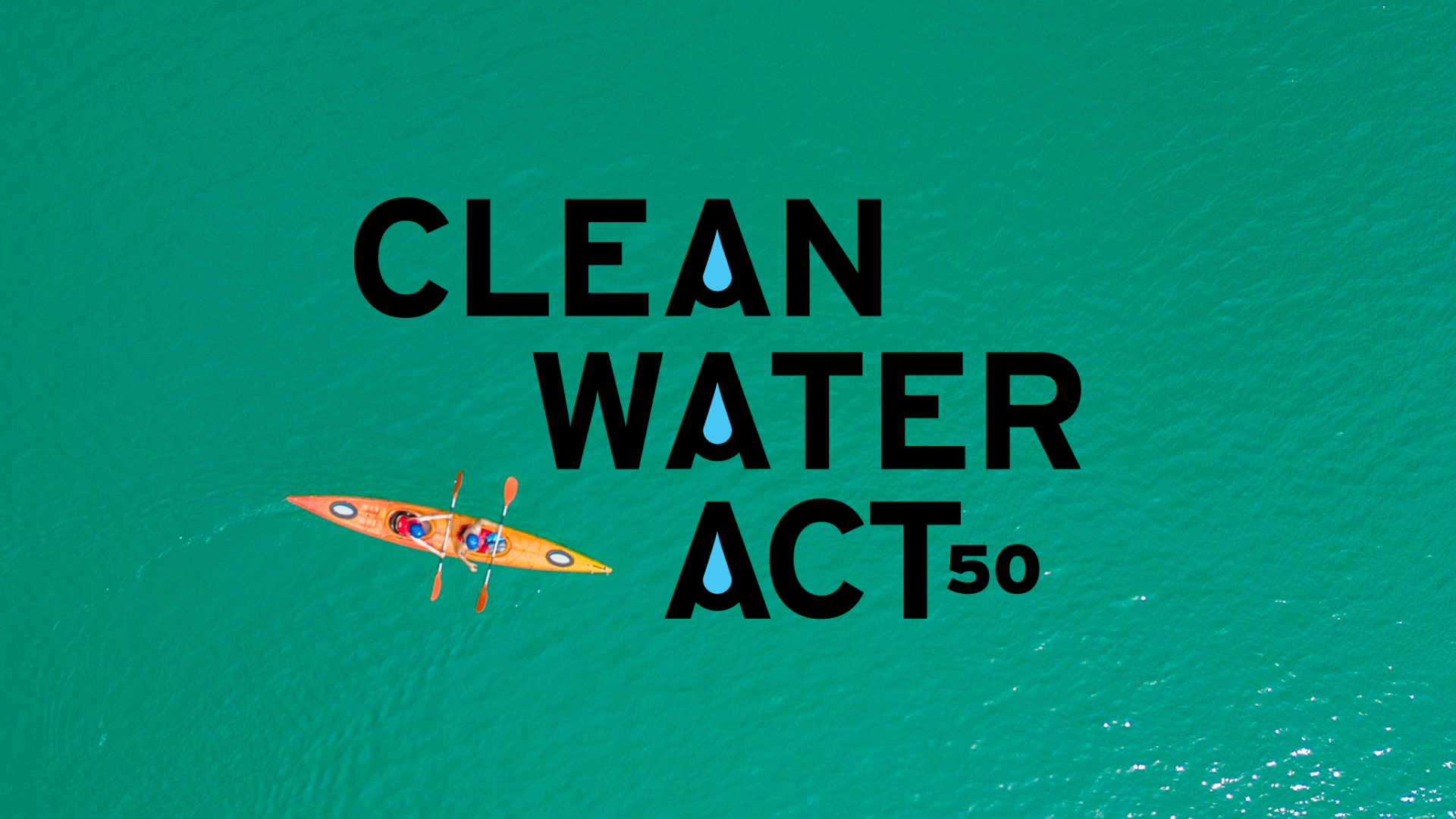
This month marks the 50th anniversary of the Clean Water Act, landmark legislation with a lofty goal to “restore and maintain the chemical, physical, and biological integrity of the Nation’s waters.” The Act envisioned that its clean water ambitions would be met by 1985 – a benchmark we sadly haven’t come close to meeting. Nevertheless, without the Clean Water Act, our water would almost certainly be worse off.
Among the Act’s most important provisions is the authorization for communities to enforce clean water standards when our government fails to do so. As a result, many of the Clean Water Act’s most dramatic successes in California are the result of decades of dedicated work by Waterkeepers and other community groups. Here is just a glimpse into California Waterkeepers’ impact over the years thanks to the Clean Water Act:
- Waterkeepers serve as one of the key defenders of the state’s Industrial Stormwater Permit – which protects against toxic pollution flowing from industrial facilities when it rains. In fact, 83% of stormwater enforcement cases in California from 2010-2016 were brought by citizens and community groups like Waterkeepers. More recently, CCKA-sponsored legislation has improved the permit itself to ensure that all industrial facilities comply with its requirements to protect against water pollution.
- A 2001 San Diego Coastkeeper lawsuit pushed the City of San Diego to invest $1 billion in infrastructure upgrades, which reduced sewage spills by 90 percent.
- Over the past two decades, Orange County Coastkeeper’s enforcement cases have resulted in the investment of over two million dollars for community projects to restore local waters originally harmed by pollution violations.
- In 2008, Los Angeles Waterkeeper, in partnership with the Natural Resources Defense Council, sued LA County and the LA County Flood Control District over stormwater pollution violations. The case went to the U.S. Supreme Court in 2012, leading to a successful district court ruling that produced a multi-million dollar settlement to invest in community and green infrastructure projects.
- A 2001 case brought by Santa Barbara Channelkeeper and the Environmental Defense Center helped to protect Oxnard from radioactive waste and carcinogens. The settlement reached with Halaco Engineering Company resulted in their agreement to stop discharging contaminated wastewater to local wetlands and beaches, and triggered an in-depth, longer-term cleanup through U.S. EPA’s Superfund process.
- Across the state, thousands of Californians are personally involved in cleaning up their waterways every year. This September, Russian Riverkeeper held its 36th annual Russian River Watershed Cleanup in honor of the Clean Water Act’s 50th anniversary, where 383 volunteers filled three 30-yard dumpsters with trash – nearly 20,000 pounds of waste that is no longer in the river.
- On August 4, 2022, the U.S. Court of Appeals re-established California’s right to protect water quality from federal dam relicensing in the Yuba, Bear, and Merced River Watersheds following a challenge from the Yuba River Waterkeeper (a program of the South Yuba River Citizens League), and other NGOs.
- In 2006, Humboldt Baykeeper, Ecological Rights Foundation, and Californians for Alternatives to Toxics filed a lawsuit against Simpson Timber Company to require the cleanup of a dioxin-contaminated tidal wetland channel at the former plywood mill site adjacent to Humboldt Bay and the Del Norte Street Pier in Eureka. In accordance with the settlement, Simpson Timber has excavated the contaminated sediment, restored the wetland channel, and installed groundwater-monitoring wells to ensure that residual subsurface contamination doesn’t leave the site.
California Coastkeeper Alliance and your local water watchdogs work hard to enforce the laws of the Clean Water Act when our government fails to do so. While we’ve had strong successes, California’s waterways face many remaining challenges, with over 90% of the state’s waters polluted or otherwise impaired. Some of our state’s lingering clean water issues include:
- Southern California beaches frequently close from sanitary sewer overflows. This past January, there was an 8.5-million-gallon spill of raw sewage into the Dominguez Channel in Los Angeles, shutting down five public beaches. Another spill in March shut down 7 miles of coastline in the Long Beach area.
- Harmful algae blooms poison pets and swimmers. In 2021, 46 incidences of harmful algal blooms were reported in the Sacramento-San Joaquin Delta alone, where 40,000 people fish for sustenance.
- Our coast is still contaminated with DDT, an infamous toxin banned in 1972. Last year, 25,000 barrels believed to contain DDT were found off the coast of Southern California.
- Increasing drought conditions have all but eliminated Northern California salmon populations. In 2021, low flows caused high water temperatures that killed 75% of salmon eggs.
- Humboldt Bay remains contaminated with dioxins, part of the EPA’s “dirty dozen” pollutants that persist in our ecosystems for many years after they are introduced. Humboldt Bay has faced this pollution since the 1980s and still lacks a plan to clean it up, threatening the region’s drinking water.
- In California’s Central Coast and Central Valley regions where agriculture reigns, nitrate contamination in the groundwater is a major issue. For example, the community in San Jerardo has suffered from contaminated water for years, leading to expensive water infrastructure projects and residents who are forced to rely on bottled water to avoid poisoning.
We have come a long way in 50 years, and we still have a long road ahead to meet the goals of the Clean Water Act. You can count on your local Waterkeepers to be here for 50 more years – or as long as it takes – to achieve swimmable, fishable, drinkable water for all Californians.

Executive Director Sean Bothwell leads CCKA’s initiatives to fight for swimmable, fishable, and drinkable waters for all Californians.



